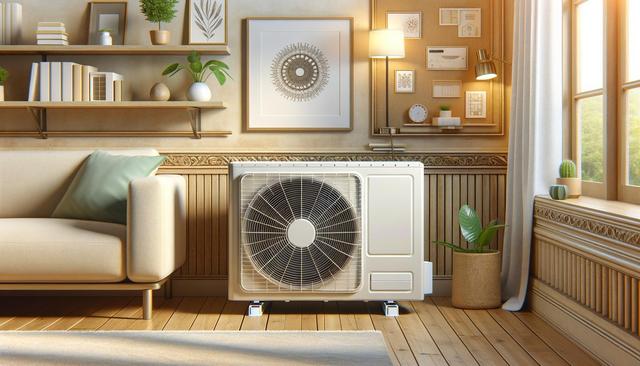Understanding Ductless Air Conditioner Systems
Ductless air conditioner units, also known as mini-split systems, are a modern and energy-efficient cooling solution designed to provide personalized comfort without the need for traditional ductwork. These systems consist of two main components: an indoor air-handling unit and an outdoor compressor. Unlike central systems that require extensive duct installations, ductless units deliver cool air directly into different zones of your home. This direct approach minimizes energy loss and enhances performance, making them a practical choice for many homeowners.
The technology behind ductless AC systems offers advanced features such as programmable settings, remote controls, and smart-home compatibility. This means you can easily control the temperature in individual rooms or areas, helping you maintain ideal comfort levels while optimizing energy usage. Whether you’re upgrading an older system or adding cooling to a new room, ductless units provide a flexible and efficient alternative.
Flexible Comfort for Every Room
One of the most appealing aspects of ductless air conditioners is their zone-based functionality. With traditional systems, you often end up cooling the entire home—even areas that are not in use. Ductless systems, on the other hand, allow for targeted cooling in specific zones, such as bedrooms, home offices, or basements. This level of control enhances comfort and helps avoid unnecessary energy consumption.
Additional benefits of zone-based cooling include:
- Customizable temperature settings for different family members
- Reduced strain on the system, which can extend its lifespan
- Improved indoor air quality due to lack of dust-prone ductwork
By opting for ductless systems, homeowners can enjoy a tailored comfort experience that suits both their lifestyle and home layout. This is especially useful in homes with unique architectural designs, room additions, or conversions where traditional ductwork may be difficult to install.
Energy Efficiency and Cost Savings
Ductless air conditioners are known for their energy efficiency. Because they do not rely on ducts, these systems avoid the energy losses associated with ducted systems—losses that can account for more than 30% of energy consumption in some cases. This translates into immediate and long-term savings on your utility bills.
In addition, many ductless systems are equipped with inverter technology, which adjusts the compressor speed based on the cooling demand. This feature helps maintain a consistent temperature while using less energy compared to systems that continuously cycle on and off. Over time, these energy-saving features can significantly reduce operating costs.
Financial incentives such as energy efficiency rebates or tax credits may also be available in some regions, further contributing to the affordability of installing a ductless unit.
Simple and Non-Invasive Installation
Another key advantage of ductless air conditioners is their ease of installation. Traditional HVAC systems often require extensive renovations to install ductwork, which can be time-consuming and costly. In contrast, ductless systems can usually be installed in a day or two with minimal disruption to your home.
The installation process typically involves mounting the indoor unit on a wall and connecting it to the outdoor unit via a small conduit. This conduit requires only a small hole in the wall, which preserves your home’s structure and aesthetics. Whether you’re renovating an old home, building an addition, or converting a garage, the non-invasive nature of ductless AC installation makes it a smart choice.
Key installation benefits include:
- Quick and clean setup process
- Minimal structural modifications
- Ideal for homes without existing ductwork
Modern Design and Quiet Operation
In addition to performance and efficiency, ductless air conditioners offer modern aesthetics that blend seamlessly into various interior design styles. The indoor units are sleek and compact, often available in different finishes to match your home décor. Some models can even be mounted flush with the ceiling or recessed into walls for a more discreet appearance.
These systems are also designed to operate quietly, making them suitable for bedrooms, nurseries, or home offices where noise can be a concern. The outdoor units are engineered to reduce vibration and sound, providing a peaceful environment both inside and outside your home.
For homeowners who value both form and function, ductless AC systems present a compelling balance of style, comfort, and efficiency.
Conclusion: A Smart Upgrade for Home Cooling
Choosing a ductless air conditioner is a smart move for homeowners looking to enhance comfort, improve energy efficiency, and reduce installation hassles. These systems offer the flexibility to cool specific zones, lower energy bills through efficient operation, and simplify the installation process—all while maintaining a modern look and quiet performance.
If you’re planning to upgrade your cooling system or need a solution for hard-to-reach areas of your home, ductless air conditioners provide a reliable and efficient alternative. With growing awareness around energy-efficient cooling solutions, more homeowners are turning to ductless systems as a practical and forward-thinking choice.






